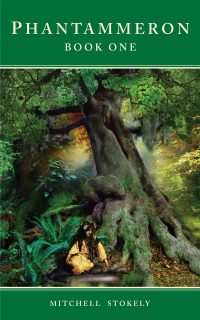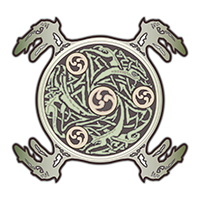Western writing is filled with the eternal battle between light and dark, good and evil. The same holds true for our politics, sports, religions, and cultures.
As I’ve lectured about on my Mythopoeia video series on YouTube, this battle of opposites originates directly from Northern Hemisphere sun and earth worship, and our ancestors mythic reflections on the changing seasons.
They then derived mythological beliefs surrounding the leaving and returning of the sun as an eternal battle between the male hero-twins of the Earth Mother. This has then formed the “underlying cultural reference point” for all of Western Culture, all of our stories and film, our political framework, our Christian faith in Europe, and even our views of men and women in relationships.

In my novel the Phantammeron Book One, Ive directly applied this antipodal view of light and dark onto the framework of my book and the history of the Phantaian world view, as not just a world-building exercise, but a SPIRITUAL REFLECTION on my ancient ancestor’s myths and cosmological world view.
From that exercise I’ve tried to show my readers some depth in this theme through a new idea surrounding this ancient theme of good and evil, light and dark that so consumes Western people. This new idea was about returning to the same theme found in say 1977 Star Wars, where a fairy tale princess and a prince can fight to save the world, yet where the power of darker feminine earth mother systems still manipulates it, and the princes twin, the dark son of the underworld, can still have his day in the conflict, yet fall in the end as the return of light ends the story.
But my main investigation in using this ancient theme in story – one that seems so foretold in every film and book with a story arc in Western Culture – was to show that the Celts saw the European theme of opposites as not just dualistic but ironic and self-conflicting. What was evil could and often did live in light characters and dark characters were often good in their myths. Fairy takes often showed events that seemed good to have a dark twist in the end, where rational events became irrational in the end. The law of opposites internally was also at work.
They saw meaning in the flip-flopping of those values. Often in English or Irish Fairy Tales you will see this strange belief that “In The One Live The Two”. A famous Welsh Poem of mine describes a poet seeing a dark tree in a vision with one half on fire one green and alive. This imagery was purposefully summoned up hundreds of years ago, before the invention of books and movies, to infiltrate the unconscious mind of the listener and initiate to the unreal nature of Myth in Western folklore; it’s purpose to secretly further the same myths about the opposing changes of the sun and its movement between life and death in their religion that their religions had done for thousands of years prior.
I’ll narrate more examples of this type of duality in more article on the Phantammeron coming up. But I’ll leave you with this example.
In the end of Book One of the Phantammeron I had shown how the world was reborn from a beautiful golden seed that became the One Tree. And it was sustained by a silver pool of water at its feet forming a sort of Biblical Garden of Eden for my protagonists in the novel (minus the morality sphere of the Tree of the Knowledge of Good and Evil). I kept the myth but tossed the allegory, though I did keep the garden as a Biblical symbol of their connected to the Creator’s grand plan for the Phantammeron world. I too used my Christian belief as the basis for more spiritual aspects of the novel. For in my book, like the Bible, the garden is a symbol of Man’s connection to God and his purpose.
But though I too hide the conflict of freewill versus determinism in God giving us a choice and to choose good or evil, so too my garden is a choice for my world that runs deeper…..is the garden going to live or die, what does the pool and tree in marriage represent, is it a good or bad bond, is the garden the paradise of the Faerie or Fay that come later or a tragic thing unto itself that is doomed to die, like a magnet for the shadows that surround it, or to perish for its own purpose and sacrifice so the children of the world might live to find a better world derived from it?
All are true in the Phantammeron.
But hidden behind all those questions is the power of opposites….for the reader later finds at the end of my first book my protagonist stumbling into a dark pit in the forest where she discovers the opposite of that paradise….a dark underground cavern with a dead black pool and dead tree roots diving into its waters. This dark pool forms the polar opposite of the upper world’s pool. But how and why?
This idea if a dark and light pool was intentional and again designed to continue the theme of the Celtic Antipode…..that for every light object there must be a shadow one. For every positive there must be a negative.
But hidden in the Black Pool my character finds this dark pool like the light one has its own tragic conflict….a Dark Mother’s spirit dwells there who though destructive and tempting shows another conflict that poses the question….what is this Black Pool and why was it made? What secrets, bad or good, hide inside it’s own Evil?
Of course the rest of the series will partly further that secret and it’s quest as well as many others. But Ill of course have to write them which Im doing now.
But that gives you a taste of my views about myth and symbol and the hidden depths and power they can have in your writing if you are brave enough to embrace Mythopoeia and reject Modern books and fantasy tropes.
There is so much your books can be beyond ones own views and needs in Modern Society. And I’m hoping to showcase the wealth of spiritual and emotional depth writing Mythopoeia can bring to one’s art and life.
– Mitchell Stokely, 1/2019



